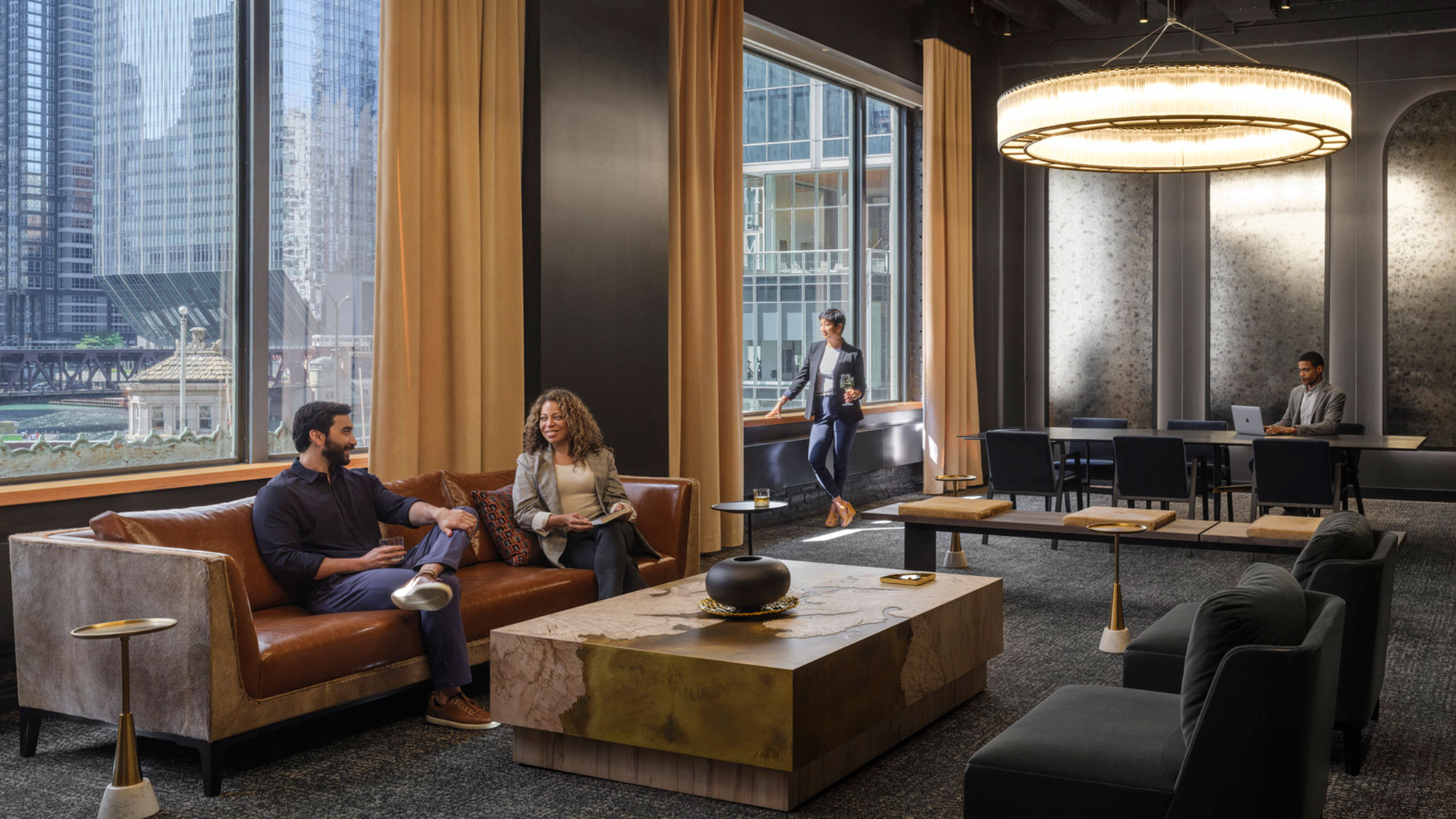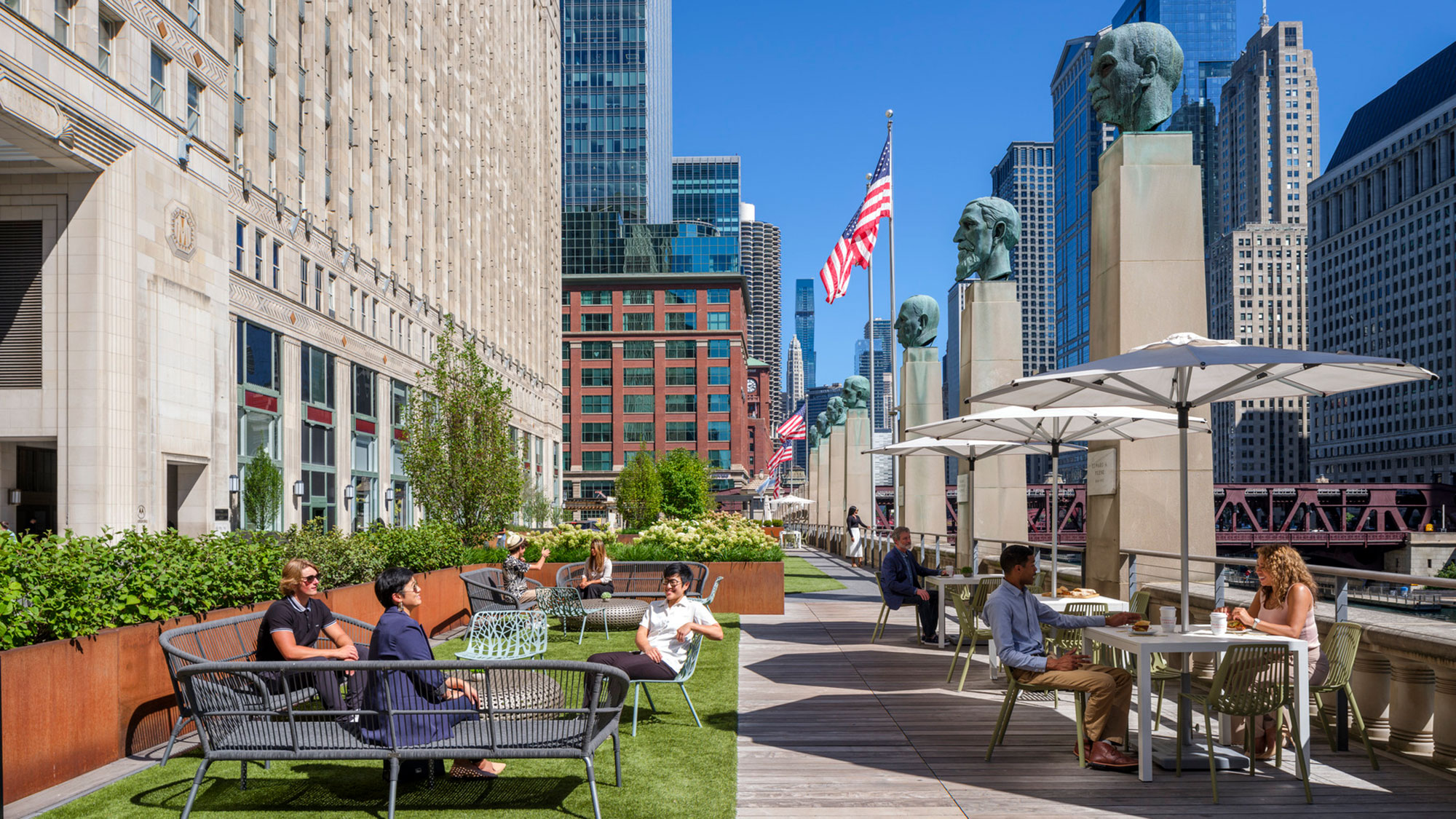A Field Guide to Authentic Amenities
To spark engagement, spur creativity, and create authentic amenities that workers truly want, designers and companies should think outside the box.

Editor’s Note: This post was originally published in Work Design Magazine.
The musician Prince once said, “What’s missing from pop music is danger. There’s no excitement and mystery.”
Replace music with the corporate office landscape and the sentiment still applies: there is a formulaic strategy that is pervasive, even as designers strive to create destination workplaces.
The amenities race has run its course, and adding a café or wellness room to a project checks a required box easily. But a conference center won’t get the workforce out of bed, and a base-level gym doesn’t persuade a worker to commute. There is no mystery in a spec suite.
So, how can we bring the unpredictable and enticing into the landscape of workplace design? What will elicit a feeling of true discovery and adventure in the everyday?
Staples to Statements
The expectation of workplace components is universally understood. Offices provide our most common, basic needs but often lack the nourishment of an elevated experience. In a time of over-saturation, simplicity in workspaces can be desirable, but playing to curiosity, surprise, and other emotions is core to disruption. Companies are driven by their capacity to innovate, but innovation doesn’t come from the static. It comes from the dynamic and inspired. Amenities need to make a statement of care and have a point of view. Deep, layered, from top to bottom, we aspire to make the most mundane spaces special.

Authentically Yours
Investing in uniqueness and authenticity is key to building culture and forming organic connections with workers beyond a return to office mandate. Ask what “authenticity” means to your clients, and shape how you deliver amenities to the vibe and values of their workplace.
We seek differentiation in our businesses and their environments. Expressing a company’s mission, values, personality, and story in space supports recruitment and retention, building teams that choose to be there. Innovative design does not mimic, it thinks outside of the corporate box and takes advantage of serendipity within the workplace to drive culture and build camaraderie. Suddenly, being told to be present doesn’t feel like a chore.

Waiting on Aesthetics
In an aesthetically savvy world, a well-composed, uplifting material palette is table stakes. You can wrap anything in attractive skin, but intentionality should drive the amenities plan — we must design experiences that are more than skin deep. There must be brains behind the beauty. Ask how programmatic decisions influence future behaviors and define what workers should get out of the space. Work backward and reset purpose to unlock potential. The environment will be attractive. That’s expected. But how the space functions and impacts its users is the ultimate success.

Iterating on the New
Workplace behaviors are becoming less tied to sacred rituals and more evolved through a culture of choice, freshness, and discovery. Don’t set it and leave it; iterate. Piloting a new amenity makes workers a part of the process and keeps the future in perpetual motion. Workplace experiences should and can be more than mundane, but it may take experimentation and feedback to get there. The willingness to try new things while expecting failures and triumphs simultaneously will inform the best path forward with the potential to fuel bold innovation.

Outside of the Box
Extending the workplace past the office walls adds another element to the daily workplace experience. Providing a worker with the ability to casually step from a contained interior to an open exterior is liberating and grounding. Research continues to show how small interactions with nature, from fresh air to natural light, support physical and mental wellness. Even in harsher climates, outdoor spaces cannot be understated as a powerful amenity. As designers, we can seek creative methods within the office walls and beyond them to provide workers with the meditative escape of a park bench, a terrace, or an atrium.

The Shared Work(place) Economy
While not every workplace can have a rooftop deck, leveraging amenities within the building and larger neighborhoods can be part of the package, and many companies consider these significant assets for workers. Location and building choice will drive programmatic development of the workplace, and landlords will attract tenants through their investment in building amenities and neighborhood perks.
In-office amenities will continue to lighten in favor of shared environments that serve as community hubs for a like-minded tenant base. This is similar to a hotel design that concentrates the most dramatic features in the communal spaces. In turn, tenants will continue to take less square footage so that utilization is higher throughout the entirety of the work week. Before understanding what in-office amenities are needed, the extent of building and neighborhood amenities must be considered as an extended workplace ecosystem.

The Unseen Amenity
The most sought-after amenity to workers is the flexibility to choose when, where, and how to work. We need to afford time and space typologies to allow the workers to explore areas of passion. As a menu of options grows within a workplace, spaces will need to flex to accommodate more needs and situations. The heightened capabilities of tech-enablement in meeting spaces and other areas around the office will drive highly customizable environments. Productivity as a metric will phase out in favor of efficiency. With that goes the need for spaces that workers have been historically tethered to because of the need for visibility.

A Consumer Mindset
Designers and companies can collaborate on achieving thoughtful amenities that spark engagement and creativity by examining purpose and authenticity, pushing beyond what’s typical, piloting new features, and thinking outside the box (literally).
To see workers as informed, opinionated, and educated consumers, organizations and designers must change the protocol towards amenities to win their loyalty. Moments must be stitched together in a meaningful way throughout the workplace, and individuals must see and feel the care in the offerings provided. There must be a journey of discovery in the everyday experience, with the vital elements of excitement and mystery that Prince talked about built in. Framed by this new outlook on amenities, designers can appeal to the hearts and minds of the most valuable asset within the workplace — its workers.
For media inquiries, email .






